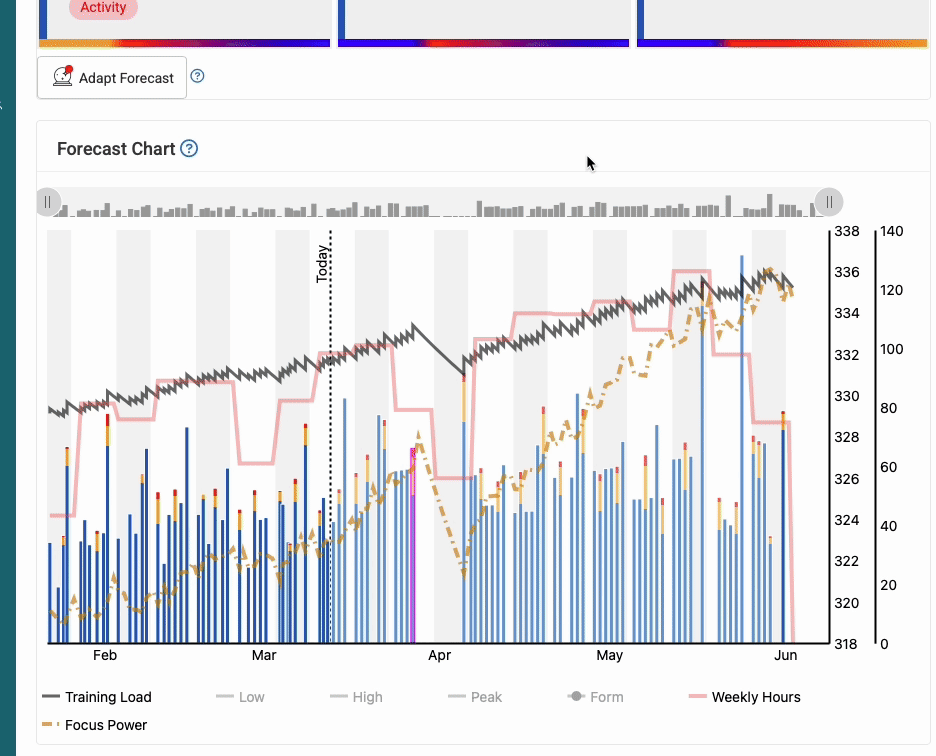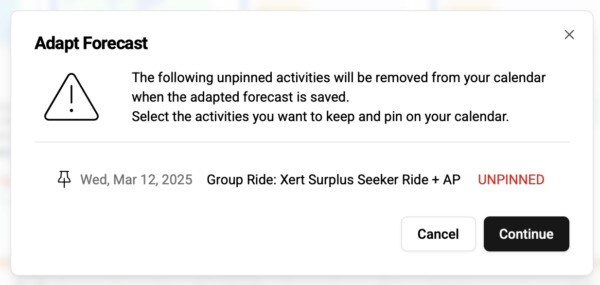Adapt Forecast allows athletes to dynamically update their training plan to reflect changes in availability, the addition of other planned activities, or adjustments in the execution of the training plan. This could happen if an athlete has completed more (or less) training than originally recommended by the Forecast AI plan, when new activities are added (such as a group ride, race, or commute), or if there are scheduling changes mid-plan.

Adapt Forecast is a user-driven feature, meaning it does not run automatically. The reason for this is that the optimization process may move training days around, adjusting intensity levels between high and low as needed. Since this could impact your plan at any time, we’ve designed it so that athletes have full control over when to adapt their forecast, rather than having the plan change automatically.
Note: If you fall too far behind in your training and the original target goal/event becomes unachievable, you will need to modify your targets in the Program tab for the Adapt process to complete successfully.
Typically, the Adapt Forecast process will rearrange your upcoming week to bring you back on track. This is known as the first pass. In some cases, your changes may require minor adjustments to the rest of the plan, which would be the second pass. However, if significant changes occur (e.g., if a planned training day is no longer available), the Forecast AI optimization process will need to re-run to accommodate these changes. You may consider re-forecasting your training plan from the Program tab of Xert.
Important Note: When Adapt Forecast runs, any scheduled workouts or activities that are not pinned will be removed. This is because those workouts may no longer be optimal due to changes in settings or availability. Before adapting your plan, you’ll receive a pop-up notification that lists the workouts and activities that will be removed. This allows you to easily pin the workouts you want to keep, preventing unwanted removals and giving you full control over your training plan.

When changes are needed, Adapt Forecast will display a red dot, signalling that you should consider running the Adapt Forecast process. In the beginning, you might run this process more frequently to see how it works, but over time, if you’re sticking closely to your plan, you may find you only need to run it occasionally.
